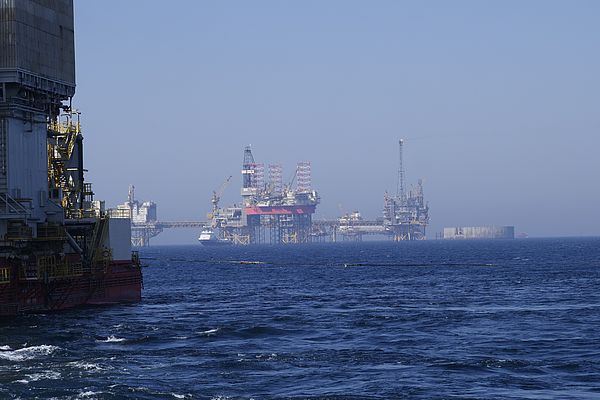Oil rigs and platforms are the pinnacle of the IoT: literally everything needs to be monitored - from weather conditions and temperatures to oil pressure, movement of the platform itself as well as the status of the various systems on board. Without all these parameters being meticulously monitored 24/7 it is impossible to keep an oil rig running. Any downtime in the oil and gas industry in general and particularly on an oil rig or platform is extremely expensive. And not only that – it is also life-threatening. Which is why IoT availability is even more essential in this very industry than in others. The loss of turnover per day in case of an average sized oil rig or platform being down amounts to around eight Million US Dollars.
SPECIAL TRAINING AND KNOW-HOW TO KEEP A CRITICAL INFRASTRUCTURE RUNNING
With over 20 years of experience in IT infrastructure service and as an expert for IoT service, Hemmersbach delivers last mile IoT services, including particularly difficult settings such as in the oil and gas industry, on a global scale. In Norway for example, Hemmersbach has around 30 specially trained technicians who together comprise a massive amount of experience. Those technicians service approx. 40 oil platforms and 35 rigs off the Norwegian coast, taking care of everything from installing, maintaining, and servicing the various IoT sensors that measure temperatures, pressure, movement, and other critical parameters that are vital for keeping an oil rig or platform running and allowing the staff on board to do their job. They do that on regular shifts, but also ad hoc in case something breaks down. “We can have a technician in place on an oil rig within a day – provided weather conditions allow us to fly the technician from mainland Norway out onto the rig in the North Sea”, said Line Sundet, Area Manager Nordics at Hemmersbach. “Given the logistical challenges of having to arrange for a helicopter ride, this is world class.”
Well-trained technicians and a perfect dispatch organization are key. Yet another essential aspect of being able to deliver the IoT to the world’s most remote locations is a standardized, global process to meet specific needs such as those of the oil and gas industry: speed, reliability of service as well as compliance and safety. Hemmersbach technicians play a crucial role in keeping the world’s most critical infrastructures running – day and night.
DELIVERING THE IOT UNDER SPECIAL CONDITIONS
Challenges when it comes to servicing an oil rig’s or platform’s IoT systems are enormous and by far not only of technological nature. The technical staff that are being sent out to oil rigs and platforms in the Norwegian territory of the North Sea (but also to any other oil rig and platform worldwide) need to fulfill strict requirements regarding their health and even their mental conditions. Before going on their first field service operation the technicians also complete a special training preparing them to work under severe conditions on an oil platform, e. g. heavy storms and torrential rain but also for the mental challenges of not being able to leave the rig or platform in time due to bad weather.
“To tell you the truth it takes a certain type of personality to do this job. Because not only physical but also mental strength is very important when working on an oil rig or platform”, Sundet explains. “It starts with the fact that rappelling down from a helicopter is not for everyone. However, this is sometimes necessary because oil rigs – other than platforms – are floating in the sea and therefore have no landing pit. And there is also a quite human aspect to it: Since not only the flight to but also from the rig back depends upon the weather conditions it is not always a certainty for the technicians to get back in time. We’ve had technicians who were forced to spend Christmas on one of the oil rigs with their families desperately waiting for them to come home.”
STANDARDIZED PROCESSES MEET THE NEEDS OF THE INDUSTRY
Regarding the obvious logistical challenges, Hemmersbach technicians can fully rely on their experience and know-how in IoT infrastructure services in not only very remote areas but also in parts of the world that are notorious for their weather or geographical extremes. Standardized processes that are applied in all parts of the world help them fulfill the regulatory and compliance requirements, for example in the oil and gas industry. The longstanding experience in servicing the sector’s IoT equipment globally helps to quickly adopt new regulations and compliance requirements regardless of the oil rig or platform being in the North Sea, off the coast of Brazil or Nigeria. On behalf of leading IoT providers, Hemmersbach and its technicians are a key partner for the oil and gas sector – thereby performing a service that is vital to one of the most essential industries globally. However, the technicians at Hemmersbach do not only service the oil and gas sector but also numerous industries globally with their ability to enable the usage of IoT and its vast benefits for any business anywhere in the world.


















